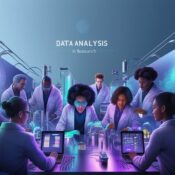Data Mining and Statistical Analysis: Techniques and Tools

Data Mining and Statistical Analysis: Techniques and Tools
Dive deep into data mining and statistical analysis to discover powerful techniques, advanced tools for identifying trends and making data-driven decisions.
At Rapid Phone Center, we understand how critical data can be for businesses seeking to optimize operations, improve customer experiences, and make informed decisions. One of the most powerful tools available today is data mining and analysis—two interconnected disciplines that, when used effectively, can provide valuable insights. In this guide, we will explore the core concepts of data mining and analysis, delve into how they compare and contrast with each other, and highlight their role in predictive analysis and big data analysis.

Data mining and analysis refer to the processes of examining large datasets to uncover hidden patterns, correlations, and insights. Data mining is the process of discovering patterns in large sets of data using techniques from machine learning, statistics, and database systems. Data analysis, on the other hand, focuses on examining, cleaning, transforming, and modeling data to discover useful information and support decision-making. Data analysis meaning involves examining, cleaning, and interpreting data to uncover useful insights for decision-making and problem-solving.
While both data mining and analysis share a goal of uncovering actionable insights, their methodologies differ. Data mining typically involves automated processes, such as clustering, regression, and classification, while data analysis is often more structured, focusing on exploring data through statistical methods and visualizations.
Data Analysis vs Data Mining: What’s the Difference?
The key difference between data analysis vs data mining lies in their approaches and objectives:
- Data analysis involves interpreting raw data using statistical tools to summarize its features, often with the intention of making decisions based on past information.
- Data mining, by contrast, focuses on finding hidden patterns and trends within datasets, often uncovering previously unknown relationships that might not be obvious through traditional analysis.
In simple terms, data mining is about discovery, while data analysis is about interpretation.
Statistical analysis and data mining are complementary disciplines. Statistical analysis can be used within data mining to validate findings and make predictions based on patterns discovered. For example, statistical techniques like regression analysis can help assess the relationships between different variables in a data mining process. Data interpretation involves analyzing and explaining data to draw meaningful conclusions and support informed decision-making.

By combining these approaches, businesses can gain deeper insights into their data. Data mining and statistical analysis work in tandem to provide both exploratory data discovery and predictive insights.
Data Mining vs Data Analysis: Which One Should You Choose?
The choice between data mining vs data analysis depends on your business goals and the type of data you’re working with. Data analysis is typically the go-to approach when you want to interpret existing data and validate hypotheses. It’s ideal for situations where the data is already structured, and you’re looking for clear answers to specific questions. Outbound sales involves proactively reaching out to potential customers through calls, emails, and other methods to generate leads and close deals.
On the other hand, data mining is the preferred method when you have large amounts of unstructured or complex data and are seeking to uncover hidden patterns that may provide valuable insights for future decision-making. The decision largely hinges on whether you’re looking for insights based on existing knowledge or trying to discover new relationships within the data.
Predictive Analysis and Data Mining: The Power of Forecasting
One of the most exciting applications of data mining and predictive analysis is in forecasting future trends and behaviors. Predictive analysis in data mining uses historical data and statistical algorithms to predict future outcomes. It is a key aspect of data mining predictive analysis — which helps businesses anticipate customer behavior, identify trends, and optimize their operations accordingly. Types of data analysis include descriptive, diagnostic, predictive, and prescriptive, each offering insights for decision-making and problem-solving.
Rapid Phone Center offers expert data analysis and mining services, transforming raw data into valuable insights. By utilizing advanced tools and techniques, we help businesses uncover patterns, trends, and opportunities within their data. Our solutions enable smarter decisions, enhanced efficiency, and a competitive edge in the ever-evolving market. Lead generation is the process of attracting and identifying potential customers to build a pipeline for sales and business growth.

For example, predictive analysis data mining can be used by retailers to forecast product demand, or by telecommunications companies to predict customer churn. By leveraging historical data, businesses can make proactive decisions based on predictions about what is likely to happen next. Omnichannel customer service provides seamless support across multiple channels, ensuring a consistent and efficient experience for customers.
Data Mining vs Big Data Analysis: What’s the Difference?
While both data mining vs big data analysis involve extracting insights from data, the scope and scale of the data are different. Big data analysis refers to the process of analyzing large and complex datasets that traditional data processing software can’t handle. It typically deals with data coming from various sources, such as social media, IoT devices, and transaction records.
Data mining, in contrast, is more focused on discovering patterns and insights within structured datasets, which can be large but aren’t necessarily as vast or varied as big data.
However, data mining and big data analysis can overlap. As the volume, variety, and velocity of data grow, businesses can combine big data techniques with data mining strategies to process and extract insights from massive datasets efficiently.
Analysis Service Data Mining: Outsourcing the Work
Sometimes, businesses may lack the internal resources or expertise to perform complex data mining analysis services. In such cases, partnering with a company that offers analysis service data mining can help. These services specialize in utilizing data mining techniques to analyze large datasets and uncover actionable insights.

By outsourcing your analysis services data mining, you can leverage specialized knowledge and technology without investing in the infrastructure or training required to conduct such analysis internally. This allows you to gain critical insights quickly and cost-effectively, allowing your team to focus on utilizing those insights for strategic decision-making.
Rapid Phone Center specializes in prediction analysis in data mining, leveraging advanced techniques to forecast trends and behaviors. By analyzing large datasets, we help businesses uncover insights, optimize decision-making, and improve customer engagement. Our data-driven solutions provide accurate predictions, enabling smarter strategies for growth and success.
The Future of Data Mining and Analysis
As data continues to grow in volume and complexity, the importance of data mining and data analysis will only increase. By adopting the latest tools and techniques in these fields, businesses can unlock valuable insights that were previously inaccessible. Additionally, with the increasing integration of machine learning, AI, and big data technologies, predictive analysis and data mining will become even more powerful.
For businesses looking to stay ahead of the curve, understanding the interplay between data mining and predictive analysis, as well as the distinctions between data analysis and data mining, is crucial. With these tools at your disposal, you can gain a competitive edge by uncovering new opportunities, optimizing operations, and making more informed decisions.

To sum up, data mining and analysis are critical tools for any business looking to gain deeper insights into their operations, customers, and market trends. Understanding the differences between data analysis vs data mining, as well as how they intersect with predictive analysis and big data, is essential to making the most of these powerful techniques. By leveraging data mining and analysis, businesses can improve efficiency, enhance customer experiences, and drive growth. At Rapid Phone Center, we are committed to helping you navigate this complex field and make data-driven decisions that propel your business forward.
Frequently Asked Questions
Explore our Frequently Asked Questions for data analysis vs data mining to understand key differences and how they impact your data strategy.
What is the difference between data analysis and data mining?
- Data analysis refers to the process of inspecting, cleaning, transforming, and modeling data to discover useful information, draw conclusions, and support decision-making. It focuses on interpreting the data.
- Data mining, on the other hand, involves exploring large datasets to identify hidden patterns, correlations, and anomalies using algorithms and statistical techniques. It is often used to uncover unknown insights.
Which is more important, data analysis or data mining?
- Both are important, but they serve different purposes. Data analysis helps to interpret data for specific, known questions, while data mining is used to discover hidden patterns or insights in large datasets that may not be immediately apparent.

Do I need data mining for effective data analysis?
- Not always. While data mining can uncover unknown patterns that can be useful for analysis, data analysis can be done without mining if you are focusing on known datasets or predefined questions.
How do tools for data analysis differ from those for data mining?
- Data analysis tools include software like Excel, R, or SPSS, which focus on statistical analysis, data visualization, and interpretation.
- Data mining tools include more advanced software like RapidMiner, KNIME, or Python libraries (e.g., Scikit-learn, TensorFlow) that apply machine learning, clustering, and pattern recognition techniques to find hidden insights.
You may also be interested in our articles:
Good Luck to You, Thanks 🌊




